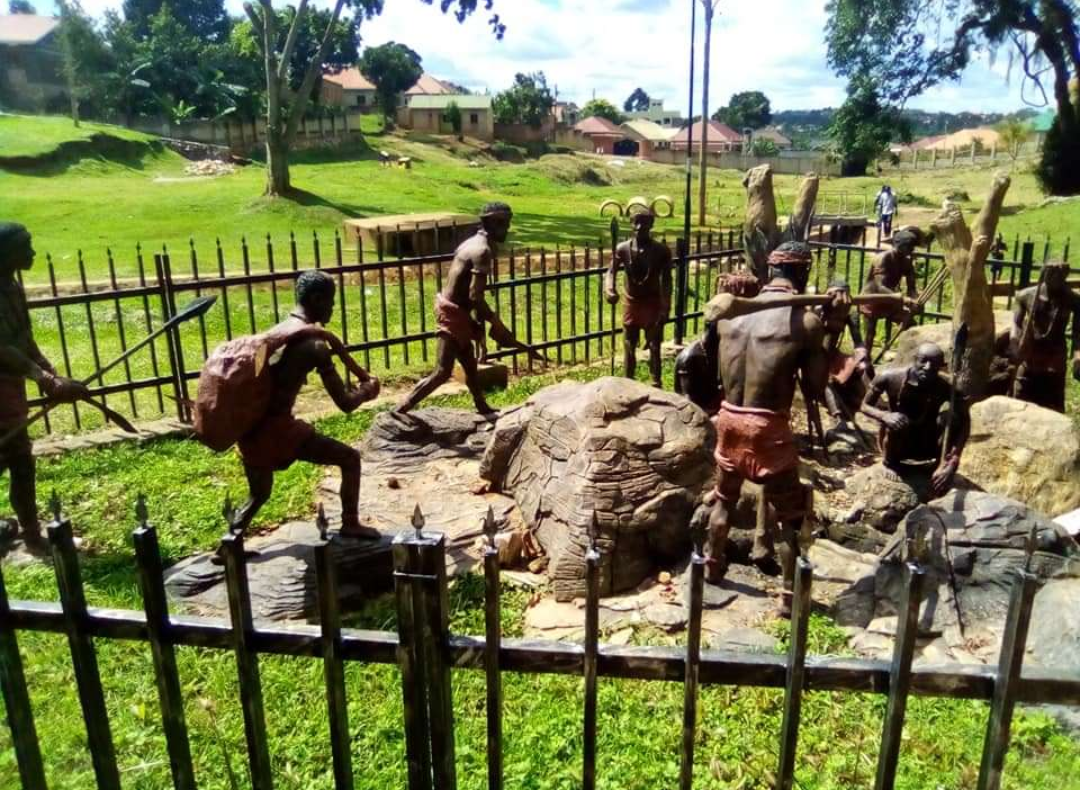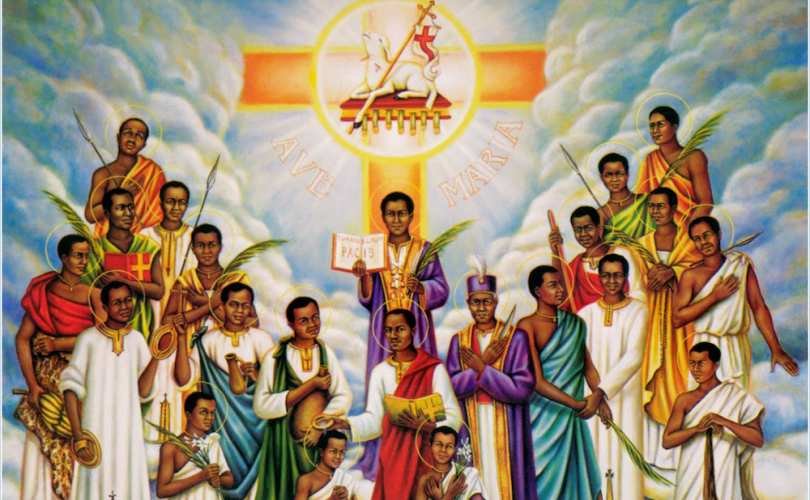Untold Story of the Uganda Muslim Martyrs
The story of the Uganda Martyrs primarily focuses on the Christian converts who were persecuted for their faith. However, it’s essential to recognize that there were also Muslim individuals who faced persecution during this tumultuous period in Uganda’s history. While their stories might not be as widely documented or celebrated, they are part of the broader narrative of religious persecution and resistance in the region. During the late 19th century, Uganda was undergoing significant social and political transformations due to the influx of foreign influences, including Christianity and Islam, brought by Arab traders and later European missionaries. This period witnessed clashes between traditional African beliefs and the new monotheistic religions introduced by outsiders.
Muslims in Uganda, particularly those who resisted the influence of Christian missionaries or refused to comply with the demands of King Mwanga II, faced persecution alongside their Christian counterparts. Some Muslims were also subjected to torture and execution for their refusal to renounce Islam or for challenging the authority of the king. While the specific details of the experiences of Uganda’s Muslim martyrs might not be as well-documented or widely known, their struggles and sacrifices deserve recognition. Their untold stories shed light on the diverse religious landscape of Uganda during this turbulent period and highlight the complexities of religious interactions and power dynamics in the region.
The event that led to the death of the Muslim martyrs begun in 1857 when kabaka mutes 1 ascended the throne after the death of his father Suna. By the time of Suna`s death, Islam had started taking root in the Buganda kingdom. The muslim religion was introduced by the Swahili traders and Arabs from the coast. Mutesa, just like his father Suna took pride in studying the Quran and its teaching. However the king didn’t force it on his subjects. It was a norm that if the kabaka liked something all of his subjects had to adopt it. Mutesa became so addictive and passionate with the religion in that he had to order for the construction of the mosque at his palace in Kasubi which is known as Nabulagala.
A muezzin would summon the faithful for prayers led by the king himself. Mutesa learnt to read Arabic and bestowed upon himself the title Iman. He was very loved by his subjects because he was intelligent. Although mutesa was loved that much, he was equally loathed for his cruelty because he maintained at least 4 punishment sites within Buganda where those who insurbodinate subjects were punished.
However, Mukasa who was a former saaza chief was known of his cruelty and ws said to have much influence over the king. Mukasa was afraid that if the king accepts to be circumcised, he would compel the rest of the muslim subjects including him to do so. In those days, circumcision was carried out using sharpened reeds. It was a long and slow painful surgical procedure that would sometimes last a whole day. Back then there was no anaesthesia to dull the pain, as it is today. It is not surprising therefore that the katikkiro was fiercely opposed to circumcision.
Mukasa sought audience with the king and told him that Buganda traditional royal custom forbade the king to shed his blood. The king, therefore, could not be circumcised, as demanded by Islamic law. This meant that religious observances that had been led by the king under a more easygoing Muslim regime, including the slaughter of animals could no longer be accepted as being carried out by a true Muslim. A group of Muslim fundamentalists from Egypt visited the Kabaka’s court at Kasubi. However, whereas they were impressed by the spread of the new religion, they were unhappy at the king’s un-Islamic conduct and reluctance to be circumcised. The guests were unhappy about the kabakas reluctance and thus incited his subjects to rebel against him.
It was not long before the Kabaka’s subjects started challenging him openly about his lifestyle. Where once hundreds would turn up for prayers, only a few would now show up. Most found excuses to be away from the palace while others simply decided to pray on their own. Mutesa noticed the dwindling number of worshippers and decided to investigate. One day the Kabaka summoned one of his most loyal servant, nicknamed Muddu Awulila (the obedient servant) to inquire why he was not turning up for prayers. Muddu Awulila answered: “My Lord, it’s because we feel you should not lead the prayer because you are not circumcised,” but the kabaka argued by saying he’s the king and they are supposed to obey everything he tells them.
Muddu Awulila replied to him stating “My Lord, our actions are not meant to disobey you, but in this case, we are not looking at you as our king but as a fellow Muslim worshipper”. Mutesa was so angry at his servant’s casual and almost insolent response. He stayed in a foul mood for the rest of day. Weeks later, Mutesa held a grand feast to celebrate the opening of a new mosque. Several cows, goats and chicken were slaughtered for the occasion. Many of the Muslim courtiers ate just the food and refused to touch the meat because uncircumcised Muslims had slaughtered the animals.
The Kabaka was angry and construed it as an act of treason and ordered all those who had refused to eat the meat to be arrested. The group was rounded up and taken to jail in Bukeesa, near Nakulabye where they were confined for four days without food. On the fourth day, the Kabaka sent them some food and meat. They ate everything except the meat. When the King’s officers inquired why they had not touched the meat, they told them to go back and ask the king to send them a live cow and goat so that they could slaughter it themselves. The Kabaka had them transferred to another jail in Nansana, hoping they will come to their senses sooner or later. On the fourth day, Mutesa again sent them food and meat. It was the same story. They were then relocated to Bukoto where again they were given a last chance to repent but again, they ate everything apart from the meat. When they refused to budge, the Kabaka ordered his chief executioner to kill them. The exact date and month of their martyrdom is not known but it said, they were marched to Namugongo and killed in 1877.
More than 70 martyrs were burnt to death that day. Only three of them; Yusuf Sebakiwa (Elephant clan), Amulane Tuzinde (Mushroom clan) and Musirimu Lwanga escaped the inferno. It is said they died of natural illness, a result of the long trek to Namugongo.
COMMEMORATING THE MUSLIM MARTYRS
While the both the Ugandan Catholic and Anglican churches mark June 3, in pomp and prayer in commemoration of the death of the martyrs, hardly anything is held to remember the Muslims.
It’s only after Idi Amin Dada came to power in 1971, after overthrowing Milton Obote that the history of the Muslim martyrs started to come to light. It is said that president Amin was typically irked that it’s only the Christians martyrs who had been honoured and ordered a memorial to be erected in recognition of the Muslims as well.
Land was acquired just opposite the present Anglican Church Martyrs, and a foundation was laid for a mosque. A small mosque made of mud and iron sheets was reportedly built at the site to coincide with the Christian martyrs celebrations that year. Amin had planned to build a huge mosque later but he was ousted before he realised his dream. In 1979 after the fall of Amin, soldiers of the Obote II regime reportedly occupied the mosque and desecrated it by slaughtering several pigs in it.
The mosque was knocked down and another was built a few meters from the original site. “The mosque has never been officially opened due to various wrangles. The original foundation stone laid by Amin was dug up by mercury prospectors. The stone’s bronze plaque that contained the inscription was stolen too.
The present mosque is a small affair, seating about 200 worshippers. Over the years however, it has slowly become dilapidated and is a painful eye sore in the surrounding community. The paint had noticeably peeled off, leaving some parts of the walls exposed to the harsh elements of weather. A few old dirty mats lay inside of the mosque carelessly strewn all over the cement floor. But despite its dilapidated state, the mosque is not short of daily worshippers.
The Imam says about twenty or more worshippers come to the mosque to pray, mostly in the evenings. But the numbers increase during the Muslim holy month of Ramathan.
Sheikh Kivumbi says there has not been any special celebrations for the Muslim martyrs since the ouster of Idi Amin, in part because of lack of funding and also because unlike Christians, Muslims do not ordinarily mark such days.
Efforts to uncover and preserve the untold stories of Uganda’s Muslim martyrs can contribute to a more comprehensive understanding of the country’s history and the broader dynamics of religious persecution and resilience in Africa. It’s essential to acknowledge and honor the experiences of all individuals who suffered persecution for their religious beliefs, regardless of their faith tradition.





Leave a Reply